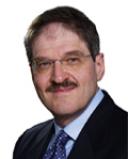Sleep
Charles Dickens and Sleep
Dickens and his writings have had a great impact on me and my career.
Posted December 20, 2013

An engraving of Charles Dickens taken from a photograph in 1861.
What does English author Charles Dickens, the man who wrote A Christmas Carol and who described marvelous characters like Tiny Tim, Scrooge, Oliver Twist and Mr. Pickwick, have to do with sleep, and why am I writing about Dickens on a blog about the science of sleep? You will be surprised to know that Dickens and his wonderful books have had a great impact on me and my career as a scientist and clinician. He had an immeasurably great impact on the world.
Most people were exposed to the writings of Charles Dickens in high school. In my case, it was A Tale of Two Cities and Great Expectations. I loved the books. Then for about a decade, while I attended university and medical school, Dickens was totally out of my mind.
My second contact with Charles Dickens was when I was a medical resident at the Royal Victoria Hospital in Montreal. I was treating an obese patient who snored, was sleepy, and was having seizures during sleep. Now how did this patient connect me again to Dickens?
I thought I knew what was causing this patient’s issues. About 16 years before then, in 1956, an article appeared in the American Journal of Medicine called, “Extreme obesity associated with alveolar hypoventilation; a Pickwickian syndrome.” This was described as a disease in obese males who under-breathed (“alveolar hypoventilation”) and who had severe daytime sleepiness. The authors mention that aspects of this “new” syndrome were described in a character, Joe the Fat Boy in the “The Posthumous Papers of the Pickwick Club,” written by Dickens and first published in serial form in 1836-37.
As described in the 1956 article the key feature of the Pickwickian Syndrome was that the patient was under-breathing during the daytime and thus had an elevated carbon dioxide level, and that was causing the sleepiness. I had assumed that my patient had this as well, but he did not. We measured the patient’s carbon dioxide level and it was normal. He did not have the Pickwickian Syndrome, he had something else. We had no clue what that something else was.

An illustration from Posthumous Papers of the Pickwick Club. .
One evening I made rounds, entered the patient’s room and saw that he was asleep and he was gasping and struggling to breathe. I realized that this had to be playing a role in his symptoms. I convinced a friend and colleague at the time, a neurosurgery resident, to set up equipment to monitor this patient’s breathing during sleep (this was way before the existence of clinical sleep labs).
We discovered that the patient stopped breathing repeatedly, and together with the episodes of no breathing, his heart slowed or sometimes even stopped for up to 10 seconds. This was the cause of his seizures! His brain was deprived of blood when the heart stopped beating. The patient was sleepy not because his carbon dioxide level was high but because he snored and stopped breathing during sleep, and the brain awoke repeatedly in order for breathing to resume.
It was then that I read Pickwick Papers. Dickens had, in fact, described Joe as snoring! This was, at least in my mind, a new rare syndrome. I presented the case at grand rounds at The Royal Victoria Hospital and was encouraged to write it up for a medical journal.
This report, perhaps the first description of sleep apnea in North America, is the first clinical paper I wrote from start to finish. It was accepted by the same journal, American Journal of Medicine. The article was called: “The sleep deprivation syndrome of the obese patient. A problem of periodic nocturnal upper airway obstruction.” The better and now more familiar term, “obstructive sleep apnea syndrome,” was not introduced until two to three years later. This was the beginning of my career in sleep medicine, and my rediscovery of Dickens. Remember that this was before the Internet, and there was no online access to the Library of Medicine. You had to use your local medical library, and McGill had an excellent one. I found that the syndrome had been described roughly 10 years before in some European journals, and in 1972, a symposium was held in Rimini, Italy, about sleep breathing disorders. The symposium was written up in a French journal which few Americans read. The journal no longer exists.

An inset from the above illustration. Everyone is watching as Mr. Pickwick chases his hat except for Joe, the Fat Boy.
In his account of “Joe, the Fat Boy,” Dickens described many of the features of my patient. What a wonderful observer Dickens was. During the next 30 years of my career, I wrote three additional articles about Dickens and his contributions to society and medicine. The last was written about a year ago on the 200th anniversary of his birth.
This great writer and social reformer had a tremendous impact on the world. Not only did he create a universe of wonderful characters such as Tiny Tim, Scrooge, Mr. Pickwick, Pip, and Madame Defarge, he also helped develop the first pediatric hospital in the world, help found the first women’s shelter, was the inspiration for the creation of the first orthopedics hospital to treat “cripples” like Tiny Tim, brought the world’s attention to poverty and its effect on children, and he wrote about slavery in America. He gave us wonderful descriptions of people with asthma, tuberculosis and several neurological disorders including Parkinson’s, stroke, and epilepsy.
I was humbled to be informed this last article I wrote about Dickens was the highest rated history of sleep medicine article since its publication. In 1974, I could have adapted from the last line of the movie Casablanca, “Charles, I think this is the beginning of a beautiful friendship.” Dickens and I have been friends for a generation.
References
Extreme obesity associated with alveolar hypoventilation; a Pickwickian syndrome. 1956
Charles Dickens: Impact on Medicine and Society 2012
Snoring and Sleep Apnea. In, Chapter 12 The iGuide to Sleep. eBook. 2013
Image 1 - Courtesy of the author.
Image 2 - Courtesy of the The Beinecke Rare Book & Manuscript Library, Yale University.
Image 3 - Courtesy of the The Beinecke Rare Book & Manuscript Library, Yale University.




